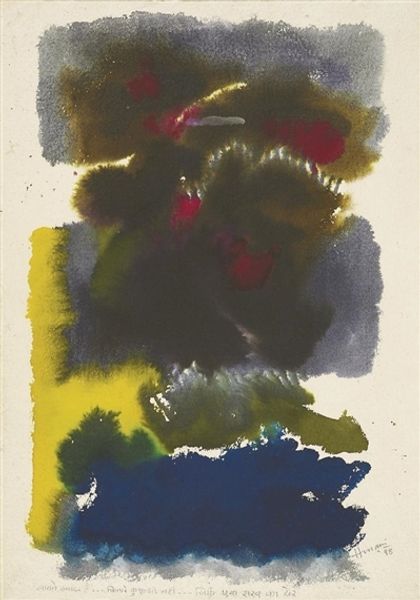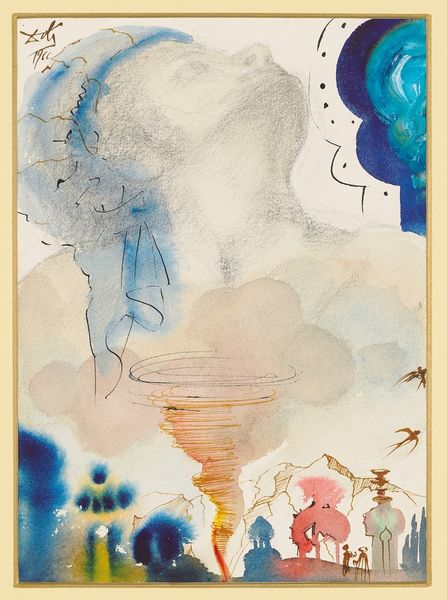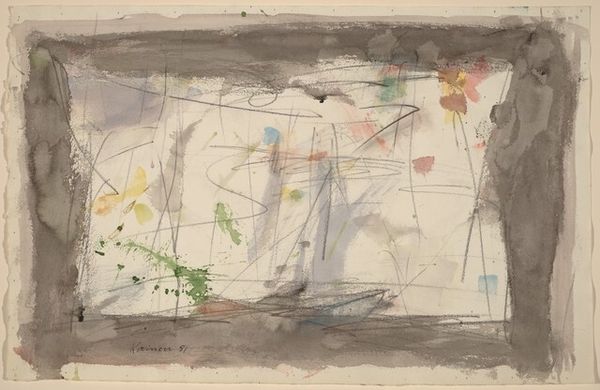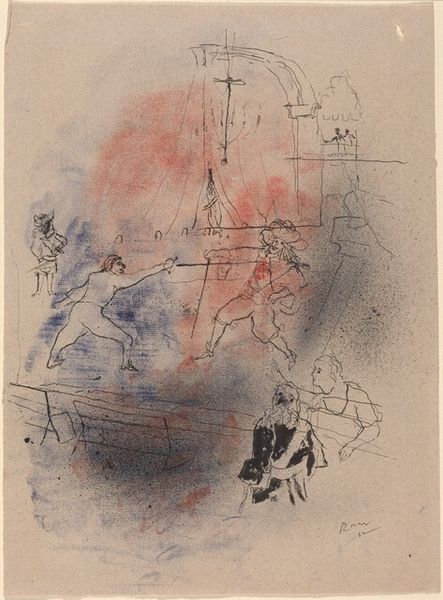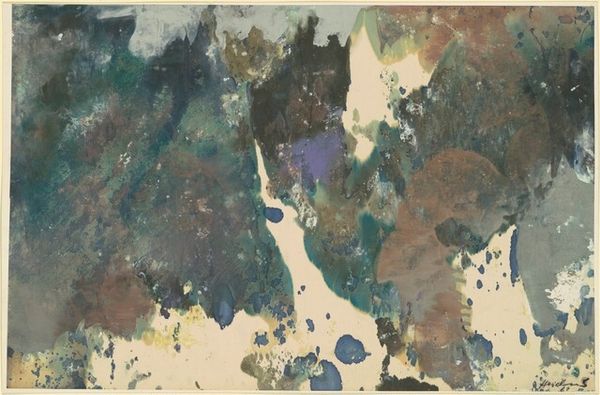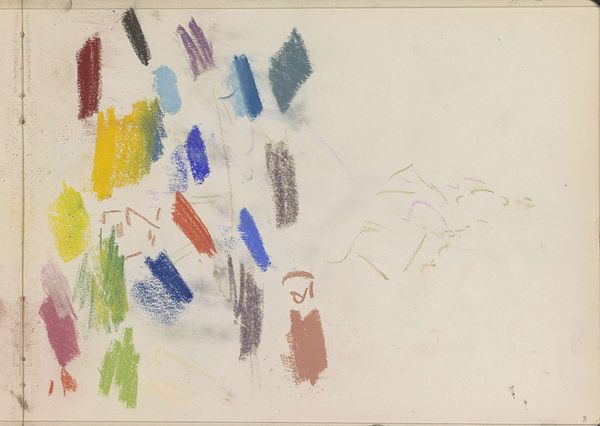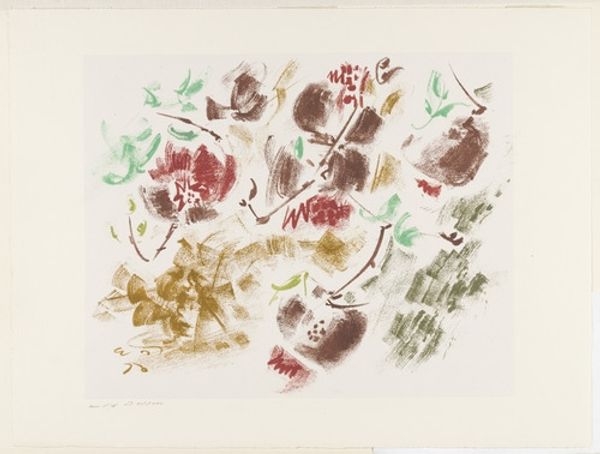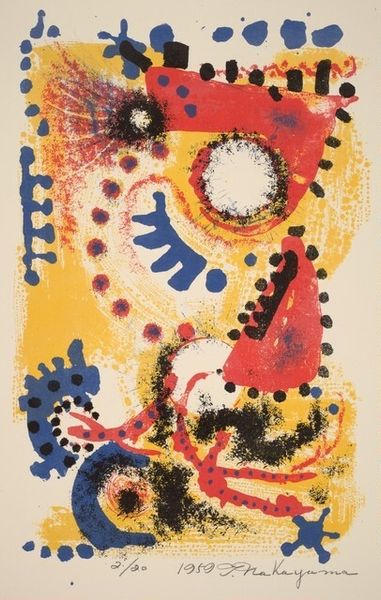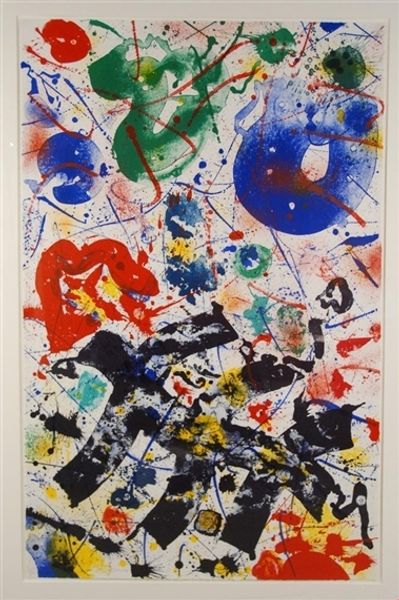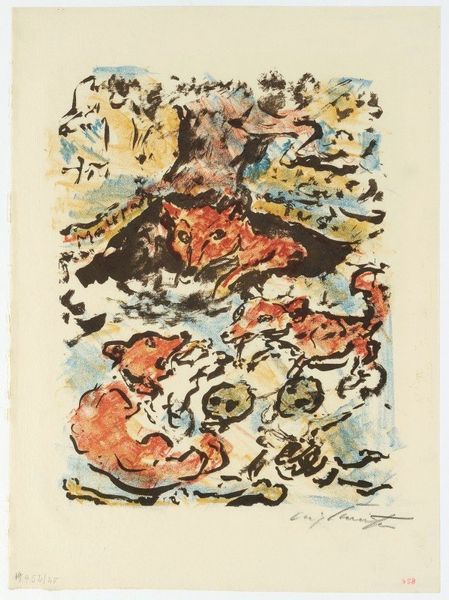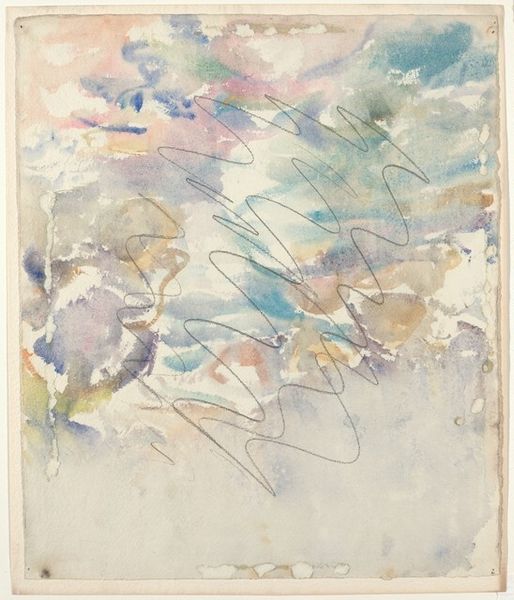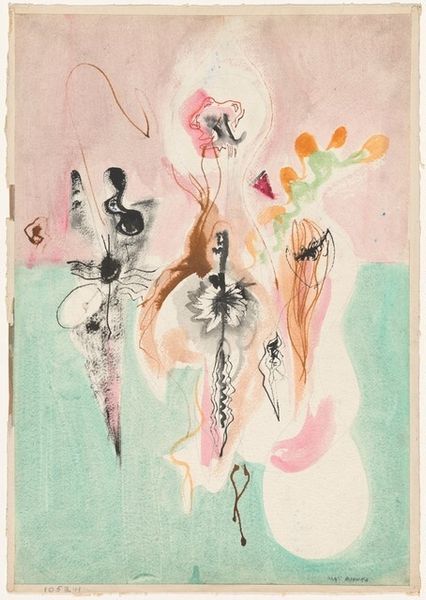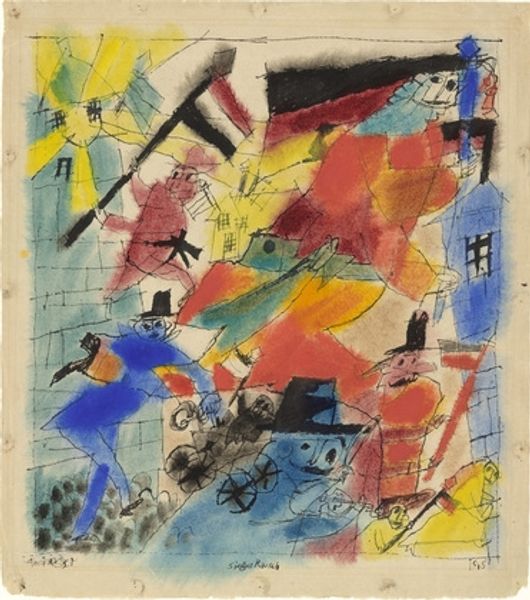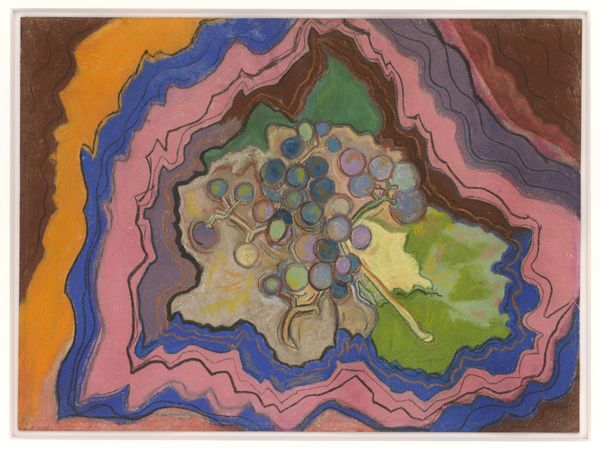
drawing, painting, watercolor
#
drawing
#
painting
#
abstract
#
oil painting
#
watercolor
#
abstraction
Dimensions: sheet: 20.4 × 12.7 cm (8 1/16 × 5 in.)
Copyright: National Gallery of Art: CC0 1.0
Editor: We’re looking at a work titled "Untitled" by Hans Gustav Burkhardt, executed in 1985. It’s an abstract piece using both drawing and painting techniques, it looks like watercolor, amongst other media. What's your initial impression? Curator: It immediately strikes me with its dualistic composition. There's a clear division in the picture plane – an upper register dominated by brooding dark tones and a vibrant blue focal point, contrasting with the turbulent, reddish depths below. The composition uses contrasting colors in each area that create tension and pull. Editor: Yes, that separation is powerful. And that it's done on what appears to be notebook paper adds a layer of intriguing detail. It shifts the setting of the art, it wasn't conceived, like we might expect, in some large, professional atelier. The visible rings on the side – how does that element factor into our understanding? Is it a study? An experiment? Curator: The notebook format complicates the reading, certainly. It could be a glimpse into Burkhardt's process, a fragment of thought. But I also see it as an intentional subversion. Burkhardt may be confronting our preconceptions of artistic creation and elevating the commonplace. Editor: This materiality is so essential. It highlights the conditions under which the work came into being. The rawness of the paper contrasts dramatically with the expressive watercolor washes, juxtaposing intentional technique with utilitarian resources. There is this raw spontaneity... Curator: Indeed. Considering Burkhardt's abstract style, do you feel the juxtaposition forces one to try and see if some objective reality exists behind those abstract fields of colour and texture, or maybe they do have some kind of hidden representational motive? Editor: That could be the case; however, with work like this, my inclination is less about representation and more about the artist's actions. The marks, the blots, and the layering of media themselves become the subject. Burkhardt isn't just showing us something; he's showing us how. It's through the labor and materials, after all, that any message appears. Curator: A valid point. Perhaps the "what" dissolves into the "how." What remains is the aesthetic experience of encountering pure form. The dramatic shift in hues still leaves me with the feeling of standing at some kind of precipice or even the abyss. Editor: It makes one reflect on how much the act of making communicates beyond any figurative depiction. The conditions and material processes here seem to offer a uniquely revealing kind of language, making any viewer confront how work really happens. Curator: Agreed. Looking closely brings forth endless complexities in that relationship between material and meaning.
Comments
No comments
Be the first to comment and join the conversation on the ultimate creative platform.
